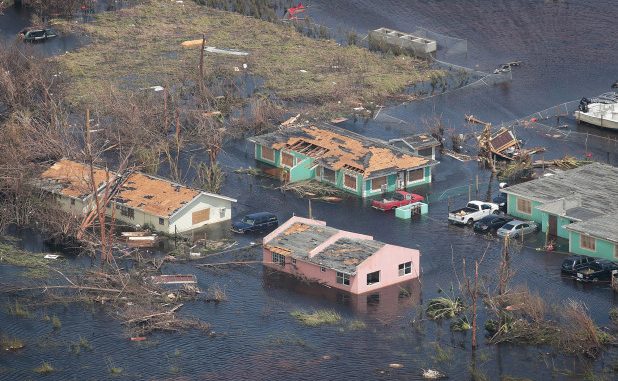
J
Jessica Kennedy, Staff Writer |Hurricane Dorian, a massive catastrophic disaster has wreaked havoc along the Caribbean Islands and the South Eastern portion of the North American coast for almost three weeks. The National Hurricane Center started tracking the storm when it was just a tropical storm brewing in the Atlantic Ocean near the top of South America. The storm made its way north over the course of a few weeks, reaching category five at one point.
The storm first impacted the Lesser Antilles in the Caribbean Sea as a tropical storm, slowly gaining strength. Dorian then moved northwest towards the Caribbean Islands, Puerto Rico, Bermuda, and North America. The tropical storm became a hurricane near the U.S. Virgin Islands almost four days after being named. When the hurricane began to move towards the Bahamas, NHC began issuing warnings via Twitter that Dorian’s storm surge and hurricane-force winds were becoming increasingly life-threatening and advised residents of the Bahamas and Florida to follow the instructions of their local emergency officials.
On September 1, Hurricane Dorian reached a category five with flash floods, nearly 200mph winds, and other life-threatening conditions for the Abaco Islands in the Bahamas. The NHC strongly advised the island’s residents who chose to not evacuate to stay sheltered until after the storm’s eye had passed. The hurricane stood above the islands that make up the Bahamas for two full days, causing massive destruction to homes, businesses, communities, and lives. According to CBS News’ storm tracking, Dorian left over 70,000 people homeless, 45 dead, and thousands unaccounted for.
Moving up to North Carolina, the hurricane continued to cause extreme amounts of damage to the Outer Banks islands. Another two were found dead, and 200 people were left homeless because of the storm and 45,000 homes were left without power. A majority of the island needed aid from emergency officials including food, water, generators, and shelter.
The hurricane did more damage when it reached the coast of eastern Canada, continuing with the symptoms of a tropical storm until it left for the middle of the North Atlantic Ocean. Canadian homes were also left without power until the storm had left.
Since the storm’s passing, thousands of people have lined up to bring aid to the Bahamas and those who were left with almost nothing from the storm. People lined up to be relocated, fed, receive medical attention, and try to find loved ones who remained unaccounted for.
Residents of the demolished islands called out to their government officials to see firsthand the damage to their homes and asked for help in relief efforts. Cruise ships, planes, first responders, and branches of the U.S. military rushed to bring multiple forms of aid to the devastated islands in the Bahamas. Many have already sent out their help for the Bahamas by donating to relief funds, delivering meals, and donating survival and hygiene essentials to be brought to those in need after the hurricane’s devastating toll.
Leave a Reply